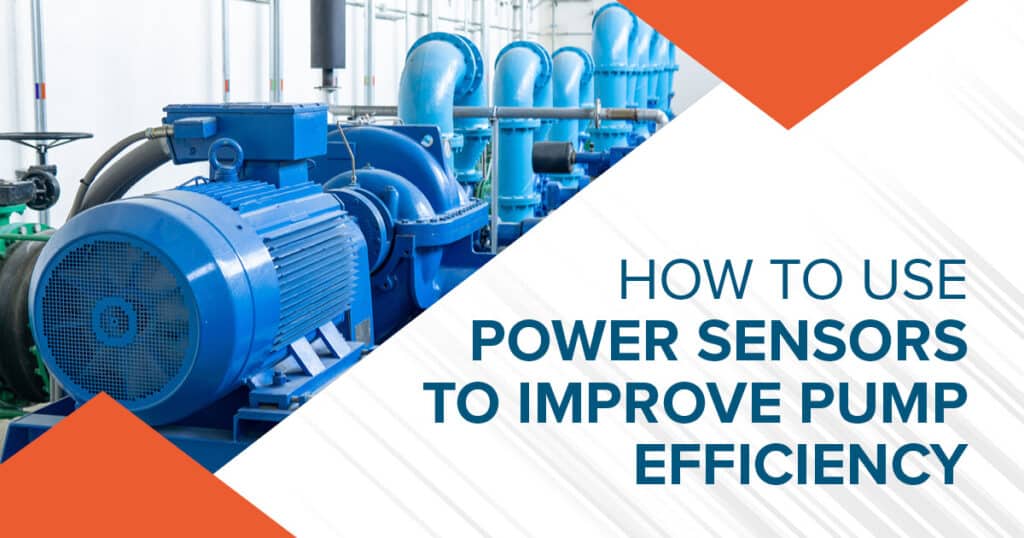You can use many advanced sensors and monitoring devices to track important operating data for your pump system. When you pair these with analytics software and predictive maintenance strategies, you can employ this technology to your advantage. Your data can help you dial in your equipment and optimize your system for maximum operating efficiency.
Pump motor management is one key area where energy efficiency is often compromised. Large and mid-size electric motors in the 1–100 HP range consume a great deal of energy. More often than not, these motors and pumps are not operating at peak efficiency. This means wasted energy consumption, unnecessary electrical expenses, and reduced cost-effectiveness.
Research shows that more than 70% of pump motors are at least 20% larger than they need to be for the equipment they power. Using motor power sensors and more accurate control systems can unlock significant energy-saving opportunities.
Energy Consumption Monitoring
By using motor power sensors, you can measure and track key performance data during operation. You can see exactly how efficiently your pump motor is running and recognize when and where efficiency may be lost. The motor may be working harder than it needs to in some situations. In others, it might not be providing enough power. Then the pump equipment isn’t operating efficiently, and other problems can occur.
Motor sensors and monitoring technology provide real-time data you can collect and analyze to identify these losses in energy efficiency. You can look for opportunities to dial in everything for the equipment to run more efficiently and also use more advanced control systems to offer more precision control over every phase of the system. Variable frequency drive (VFD) systems are becoming more common for this reason. They can adjust on the fly with more enhanced control and flexibility for changing conditions.
Predictive Maintenance
Another way to improve the performance of your pump motor sensors and other pump monitoring sensors is to adopt a predictive maintenance model. This approach uses the latest control, monitoring, and analytics technology to your full advantage. Sensors collect data, and artificial intelligence (AI) programs collect and analyze the data instantaneously. You can identify even the slightest changes in conditions and catch potential problems before they develop into something much worse. You can optimize your maintenance planning, timing, and tasks to keep your equipment—and the pump system as a whole—fully optimized at all times. This makes the technology last longer while dramatically improving your overall operating efficiency.
When to Replace a Pump Motor
Pump motor sensors can assist with determining how to manage your motor. You may learn through data analysis that you have the wrong motor for the pump equipment it is running. It may be too large or too small, or the motor itself may not be performing up to its desired capabilities for a variety of reasons: age, wear, control settings, etc. Sensor monitoring may provide insight to help you decide if it’s worthwhile to replace your pump motor with something that is more efficient or effective in terms of running your specific equipment. It may be time to replace a worn-out drive system, or you may decide it’s worth the investment to replace an underperforming motor with one better suited for your pump system. If the cost savings add up over time through improved energy efficiency, reduced equipment wear, and improved processing performance, this data may make your decision much easier.
For all your pump management needs and guidance on how to implement the latest monitoring, control, and predictive maintenance technology within your operation, contact the team at DXP Pacific today. Let us find the best ways to optimize your pump system and achieve maximum operating efficiency.

